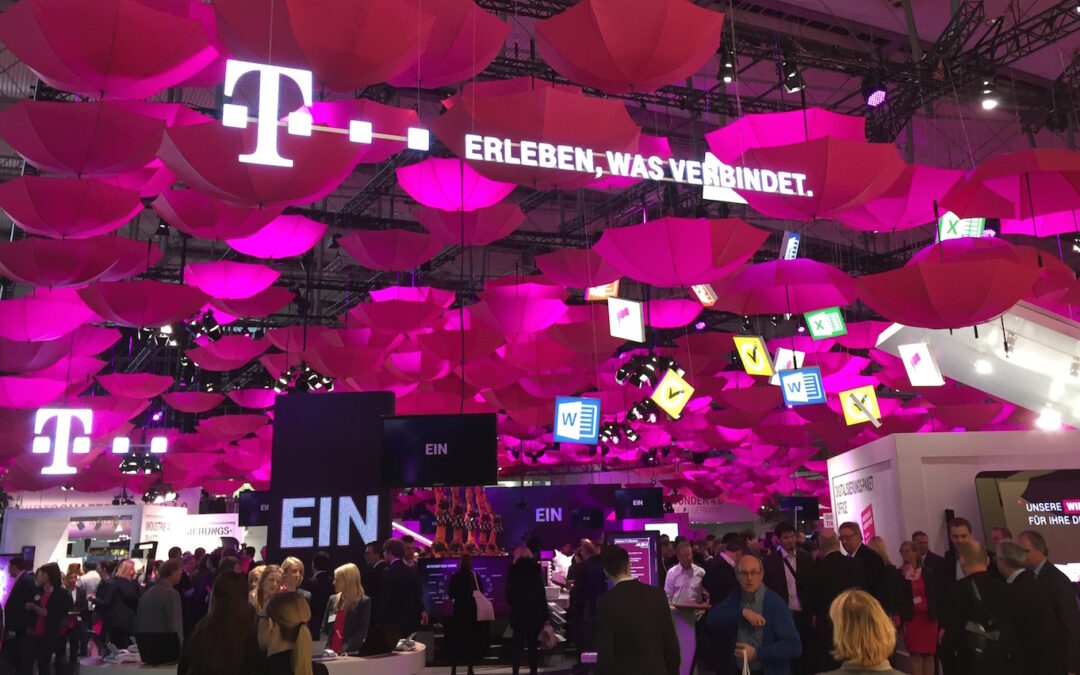Deutsche Welle captured this sense of a new frontier in its review of the event entitled CeBIT 2015: German industry’s digital transformation, suggesting the skills we need for the next phase are not necessarily those that got us here:
“The era of one-size-fits-all software is over,” [Software AG’s CEO] Streibich said. He too sees digitization as a challenge for the entire German industry. “It’s about what we create together,” he said. Digitization is not an end in itself, but it will help industry remain competitive and prepare for the future – “and we have an excellent starting position in Germany, because we’re an industrial nation.”
It is not hard to see that this is not just a new category of products, but part of a wider, more fundamental change to what we mean by ‘products’ and ‘services’ and the capabilities that companies need to operate in a more fluid space that involves hardware, software, data, services and experiences in a variety of new combinations.
Charlie Bess wrote about some of the new technology capabilities that will be required in a piece this week about IoT:
“For businesses this shift will involve a range of capabilities that are currently approached by most in isolation. Part of that isolation is likely caused by the constraints placed by the lack of ‘alignment’ between IT and the business.”
“These capabilities need to be assessed and integrated from a business-centric perspective and mined for service possibilities. I firmly believe the concept of enterprise architecture will need to break out of the womb of IT in their effort to tackle these larger business issues.”
But we also need to build the kinds of organisation capable of operating in a more connected, agile and open way to make the most of the potential new technology offers, and this is where German and European businesses have both strengths to build on and weaknesses to improve.
Julie Meyer wrote an excellent piece in the Financial Times this week about how Europe needs to avoid its startup value being acquired and consumed by Silicon Valley, and focus more on building great platforms, companies and ecosystems than trying to find the disruptive unicorns that Silicon Valley prioritises:
“Europe … is a firstborn child. We have a stake in the outcome. Our social welfare state operates differently. We have a dearth of risk capital. Our entrepreneurs are not as good at telling big stories. We recognise that innovation is additive. We didn’t stop listening to radio when television arrived. We want to enable and extend the existing infrastructure, not rip it up. We fundamentally want a sustainable ecosystem: for consumers and employees both to win.”
She also argued a point that we have made before, which is that the established companies should aim to become platforms for innovative startups to find routes to market for new products and services by acting as hosts for emerging technology ecosystems:
“By engaging with [startups], non-tech traditional businesses become platforms in their own right, achieving network effects, securing net new revenues and turning their industries into ecosystems.”
This points to a key strength of European business: the ability and desire to create long-lived companies that balance employee and customer needs. Another strength mentioned in the Deutsche Welle article and a subject of pride among German industrialists at CeBIT is the focus on excellence in engineering and production. German companies were not the first to adopt IoT or modern internal collaboration technology, but when they did, they did so with the same thoroughness and attention to detail that they are famous for in their industrial products.
But we also need to be realistic about where this strength can tip over into weakness. The same highly process-driven, tightly-controlled management culture that means a company can run a production line efficiently and with low variance in output is not the same culture that produces cross-cutting innovation, or which creates customised experiences for customers, for example.
After my talk at the Social Business Arena in CeBIT, our host Björn Negelmann asked me why I was talking about social technology in terms of capabilities and organisational transformation, perceived as more HR-related than IT, whilst others continued to argue for its importance based on ROI metrics. I firmly believe that trying to create a more social, connected enterprise is a good thing in itself, but we could lose our way if we manage this process according to either very short-term and limited ROI metrics or very long-term and vague benefits that we hope to bring to the organisation in the future. Some of the most interesting work we did last year was aligning E2.0 strategy with existing business strategy to create change recommendations aimed at helping develop new organisational capabilities, which shows much more direct benefit that pursuing only proxy metrics for activity or adoption of the tools. We would love to repeat this in other industrial firms, so if you want to learn more, please contact us.
As CeBIT demonstrates, the starter gun has been fired on a new and exciting phase of digital transformation, but even leading traditional companies are missing important capabilities that will hold them back – whether we are talking about the limits of silos and vertical structures or a lack of connected working making combinatorial innovation more difficult – and that is what we need to focus on. The purpose of social and digital technology in the workplace is to allow the organisation and its people to develop the new capabilities that are needed to success in a fast-changing world, and that is how our work should be judged.

